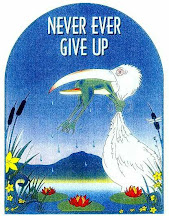
I stepped outside to feed George and there it was... hanging in the air. The beginning smells of spring and the Song hung over my mind. I had observed the other day that our geese were beginning to pair of and I told my Sweetie that some of the songbirds were as well were showing sign of being twitterpated!
Flower: [about two birds fluttering around] Well! What's the matter with them? Thumper: Why are they acting that way? Friend Owl: Why, don't you know? They're twitterpated. Flower, Bambi, Thumper: Twitterpated?
Olfaction, the sense of smell, is the detection of chemicals dissolved in air. The chemicals themselves, generally at very low concentrations, are called odors.
Olfaction, taste and trigeminal receptors together contribute to flavor. The human tongue can only distinguish among seven to eight distinct types of taste, while the nose can distinguish among hundreds of substances, even in minute quantities. Olfaction amplifies the sense of taste, as can be proven by a simple "kitchen" experiment. If peeled pieces of apple are placed in one bowl, and peeled pieces of potato in another, and then the nostrils are held completely closed while a piece from one bowl is sampled, the taste of apple and potato are indistinguishable.
The smell was that of Rosie the Resident Skunk, a name we tagged on to the animal way back when the kids were small.
Skunks are nocturnal, hunting at night for insects, grubs, small rodents, snakes, frogs, mushrooms, berries and fruit, pet food, bird food, and garbage. Skunks have a high preference for eggs and, as a result, ground-nesting birds suffer losses. Of course another possibility could be the rains had come and the ice was breaking up on the creek possibly making many evacuate their burrows.
Breeding usually occurs during February and March for the striped skunk; gestation time is about 9 weeks and litters range from four to six kits. After a few months the kits can be seen following their mother as she makes her nightly rounds in search of food. Skunks do not hibernate, but in regions of colder weather females may congregate in communal dens during the winter. Since skunks often den in burrows, but because they prefer to do as little digging as possible, they will use abandoned burrows dug by ground squirrels, fox, or coyotes, enlarging them only if necessary. If dens are scarce, they will readily use brush piles, hollow logs, and culverts. In urban settings, they den under decks, porches, or beneath buildings.


No comments:
Post a Comment